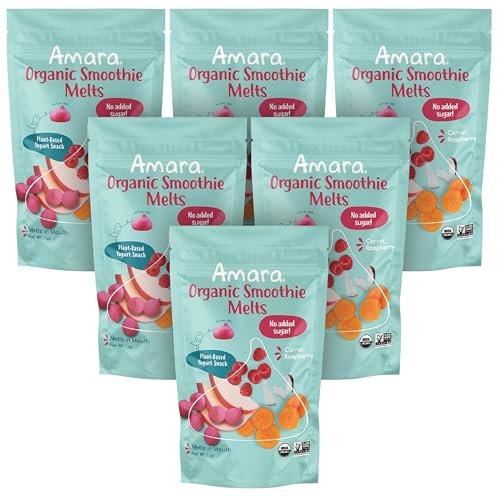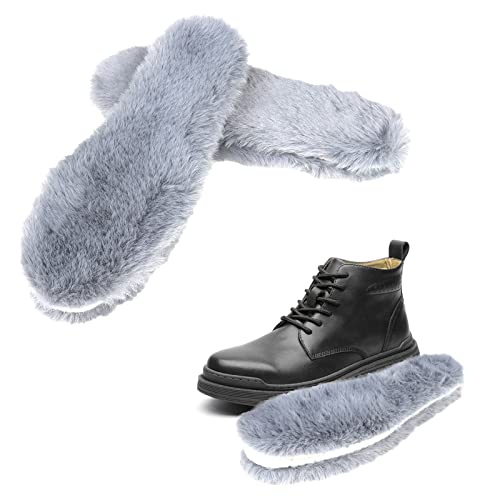Unfortunately not sure on pedigree but have record of all the kits she's ever had if that helps at all. I have posted her on other forums in the past and always had split answers so here it goes. Cannot find her younger pics but she was alot lighter and darkened with age.
You are using an out of date browser. It may not display this or other websites correctly.
You should upgrade or use an alternative browser.
You should upgrade or use an alternative browser.
Help me solve a 3 year debate! Sallander or ??
- Thread starter curiousT
- Start date

Help Support Rabbit Talk Forum:
This site may earn a commission from merchant affiliate
links, including eBay, Amazon, and others.
Although her dark parts are quite dark, like you might see in a chinchilla-based color (sallander), if she darkened with age that points toward the influence of the sable allele <c(chl)>. The blotchiness over her back also argues for sable influence. Her dark coloration is so dark that I might guess seal point, which comes from a double dose of sable.Unfortunately not sure on pedigree but have record of all the kits she's ever had if that helps at all. I have posted her on other forums in the past and always had split answers so here it goes. Cannot find her younger pics but she was alot lighter and darkened with age.
I've not dealt extensively with sallanders, but my experience with chinchillas (chinchilla agouti) and ermines (non-extension chinchilla agouti) is that they don't darken with age or get blotchier over time.
Sable point and sallander are very similar both genetically and phenotypically. They are both self non-extension colors; one is chinchilla-based and one is sable-based. So sallander is <aaB_c(chd)_D_ee> and sable point is <aaB_c(chl)_D_ee>. Both of those alleles mostly (chin) or completely (sable) block the expression of pheomelanin (yellow pigment) in the coat. Sable also affects the expression of black, causing it to appear a bit faded, so sepia instead of black, though the sepia can be quite dark due to modifiers that affect the expression of eumelanin (dark pigment). Self removes the expression of agouti rings in the coat. Thus sallander and sable point can look very similar, having only subtle differences that might be hard to discern in a photo on a computer screen.
If the rabbit gets two copies of the sable allele <c(chl)c(chl)> it is known as a seal, where the sepia is so dark that it looks almost black. The non-extension alleles then cause the rabbit to look pointed because the expression of dark pigment tends to be restricted to the shorter fur on the extremities and belly. Thus a seal point could be very difficult to tell from a sallander.
The thing to do is test breed, and reading your other post, it sounds like you might already have that information. If you breed a sallander with a REW <cc> or himalayan <c(h)_>, depending on whether the REW is agouti or self "underneath," you will get chinchillas or self chins (they look self black); if she is a sable point, you will not get chinchillas but sable chins or sables. If she is a seal, all of her babies with a REW or himi will be sables. There are other combinations that will give you insight as well, but it might be easier to figure it out if you list the varieties of her kits (along with the varieties of their sires, if possible).
So, can you list her mates' and offsprings' varieties? Hidden recessive alleles like dilute or chocolate can complicate things a little, but you can probably still figure out whether she's a chin-, sable- or seal-based variety.
Last edited:
Thank you so much for your time. Yes I used to breed with a broken black tort they would have torts mostly then a sable type appearing one which could be inaccurate. I will attach pics of those.
Now I have a black n ornge Harlequin they always have a Harlequin, magpie, a tort and again a sable looking type (last pic)
Now I have a black n ornge Harlequin they always have a Harlequin, magpie, a tort and again a sable looking type (last pic)
Attachments
Sorry I posted the pics wrong. With the tort she usually has the darker "Sallander" (inaccurate I realize now) appearing ones except the third pic is also from that litter. With the Harlequin she has the lighter ones which I assumed were sable points or something (last picture)Thank you so much for your time. Yes I used to breed with a broken black tort they would have torts mostly then a sable type appearing one which could be inaccurate. I will attach pics of those.
Now I have a black n ornge Harlequin they always have a Harlequin, magpie, a tort and again a sable looking type (last pic)
Attachments
Thank you so much for your time. Yes I used to breed with a broken black tort they would have torts mostly then a sable type appearing one which could be inaccurate. I will attach pics of those.
Now I have a black n ornge Harlequin they always have a Harlequin, magpie, a tort and again a sable looking type (last pic)
I'm confused about which kits are from which sire, but here are some thoughts.Sorry I posted the pics wrong. With the tort she usually has the darker "Sallander" (inaccurate I realize now) appearing ones except the third pic is also from that litter. With the Harlequin she has the lighter ones which I assumed were sable points or something (last picture)
If your doe is a sallander or sable point and you bred her to another non-extension self, which a tort is, you'd only get non-extension self varieties. It would look like this:
Black tort x Sable point
<aaB_C_D_ee> x <aaB_c(chl)_D_ee>
So, all of the kits would be <aa> and <ee>. You could get more torts <aaB_C_D_ee> and sable points <aaB_c(chl)_D_ee>. But you would not be able to get a sable <aaB_c(chl)_D_E_> because that is a full-extension <E_> color and neither parent has an <E> to give.
So if the broken tort sire produced these three kits in your second post, that would make sense. They all look like sepia-toned sable points <c(chl)> rather than chinchilla-based <c(chd)> sallanders on my screen:



The broken one confuses me no matter which sire it's from. It looks like it has some harlequinization on the right ear, and possibly on the left as well. The blotchiness of sable can look a bit like harlequin patchiness, and vice versa, so I'd want a better look at this one before saying anything definite. If it's from the broken tort sire, it can't be harlequin <e(j)> since both parents are <ee>. If it's from the harlequin sire <??B_C_D_e(j)_>, it could be a torted harlequin, but I don't know where the broken pattern could have come from.

The kit below looks like it could be a sable. It doesn't have the distinctly darker points I'd expect, but there does seem to be some shading, and sables' color tends to darken with age. It also has the faintly frosted look that sables go through at a certain stage. I can't think of anything else it would be. I think it must be from the harlequin sire since it is not a non-extension color.

I don't see any kit that looks like a magpie <aaB_c(chd)D_E_> or <aaB_c(chl)D_E_> in the photos you've posted so far. But everything else seems to be pointing toward sable <c(chl)> rather than chinchilla <c(chd)>.
For reference, here is an American Sable <aaB_c(chl)_D_E_>:

He has darker points, but his body is sepia brown, not creamy colored. Note the blotchy coloration that is very common in sable-based varieties due to molt and the temperature sensitivity of the sable allele.
Here is his sable point half-sister <aaB_c(chl)_D_ee>. (The apparent alternation of different colors on her feet, face and ears is not due to harlequinization, it's just how sables go!)

Below is a sable point <aaB_c(chl)_D_ee> Holland Lop. She is older and very dark, but you can still see that her body is more creamy than sepia brown. Note, again, the blotchiness that's typical of sables at many times of their life.

Last edited:
My apologies for being confusing. I labled them this time as I should've before. The confusing one is from the broken tort and her along with the darker kit.I'm confused about which kits are from which sire, but here are some thoughts.
If your doe is a sallander or sable point and you bred her to another non-extension self, which a tort is, you'd only get non-extension self varieties. It would look like this:
Black tort x Sable point
<aaB_C_D_ee> x <aaB_c(chl)_D_ee>
So, all of the kits would be <aa> and <ee>. You could get more torts <aaB_C_D_ee> and sable points <aaB_c(chl)_D_ee>. But you would not be able to get a sable <aaB_c(chl)_D_E_> because that is a full-extension <E_> color and neither parent has an <E> to give.
So if the broken tort sire produced these three kits in your second post, that would make sense. They all look like sepia-toned sable points <c(chl)> rather than chinchilla-based <c(chd)> sallanders on my screen:
View attachment 44597 View attachment 44598 View attachment 44599
The broken one confuses me no matter which sire it's from. It looks like it has some harlequinization on the right ear, and possibly on the left as well. The blotchiness of sable can look a bit like harlequin patchiness, and vice versa, so I'd want a better look at this one before saying anything definite. If it's from the broken tort sire, it can't be harlequin <e(j)> since both parents are <ee>. If it's from the harlequin sire <??B_C_D_e(j)_>, it could be a torted harlequin, but I don't know where the broken pattern could have come from.
View attachment 44592
The kit below looks like it could be a sable. It doesn't have the distinctly darker points I'd expect, but there does seem to be some shading, and sables' color tends to darken with age. It also has the faintly frosted look that sables go through at a certain stage. I can't think of anything else it would be. I think it must be from the harlequin sire since it is not a non-extension color.
View attachment 44593
I don't see any kit that looks like a magpie <aaB_c(chd)D_E_> or <aaB_c(chl)D_E_> in the photos you've posted so far. But everything else seems to be pointing toward sable <c(chl)> rather than chinchilla <c(chd)>.
For reference, here is an American Sable <aaB_c(chl)_D_E_>:
View attachment 44594
He has darker points, but his body is sepia brown, not creamy colored. Note the blotchy coloration that is very common in sable-based varieties due to molt and the temperature sensitivity of the sable allele.
Here is his sable point half-sister <aaB_c(chl)_D_ee>. (The apparent alternation of different colors on her feet, face and ears is not due to harlequinization, it's just how sables go!)
View attachment 44600
Below is a sable point <aaB_c(chl)_D_ee> Holland Lop. She is older and very dark, but you can still see that her body is more creamy than sepia brown. Note, again, the blotchiness that's typical of sables at many times of their life.
View attachment 44595
I didn't post the Magpies first but I'll post the two she's had last. (Of course from the Harlequin buck and her)
I'm confused about which kits are from which sire, but here are some thoughts.
If your doe is a sallander or sable point and you bred her to another non-extension self, which a tort is, you'd only get non-extension self varieties. It would look like this:
Black tort x Sable point
<aaB_C_D_ee> x <aaB_c(chl)_D_ee>
So, all of the kits would be <aa> and <ee>. You could get more torts <aaB_C_D_ee> and sable points <aaB_c(chl)_D_ee>. But you would not be able to get a sable <aaB_c(chl)_D_E_> because that is a full-extension <E_> color and neither parent has an <E> to give.
So if the broken tort sire produced these three kits in your second post, that would make sense. They all look like sepia-toned sable points <c(chl)> rather than chinchilla-based <c(chd)> sallanders on my screen:
View attachment 44597 View attachment 44598 View attachment 44599
The broken one confuses me no matter which sire it's from. It looks like it has some harlequinization on the right ear, and possibly on the left as well. The blotchiness of sable can look a bit like harlequin patchiness, and vice versa, so I'd want a better look at this one before saying anything definite. If it's from the broken tort sire, it can't be harlequin <e(j)> since both parents are <ee>. If it's from the harlequin sire <??B_C_D_e(j)_>, it could be a torted harlequin, but I don't know where the broken pattern could have come from.
View attachment 44592
The kit below looks like it could be a sable. It doesn't have the distinctly darker points I'd expect, but there does seem to be some shading, and sables' color tends to darken with age. It also has the faintly frosted look that sables go through at a certain stage. I can't think of anything else it would be. I think it must be from the harlequin sire since it is not a non-extension color.
View attachment 44593
I don't see any kit that looks like a magpie <aaB_c(chd)D_E_> or <aaB_c(chl)D_E_> in the photos you've posted so far. But everything else seems to be pointing toward sable <c(chl)> rather than chinchilla <c(chd)>.
For reference, here is an American Sable <aaB_c(chl)_D_E_>:
View attachment 44594
He has darker points, but his body is sepia brown, not creamy colored. Note the blotchy coloration that is very common in sable-based varieties due to molt and the temperature sensitivity of the sable allele.
Here is his sable point half-sister <aaB_c(chl)_D_ee>. (The apparent alternation of different colors on her feet, face and ears is not due to harlequinization, it's just how sables go!)
View attachment 44600
Below is a sable point <aaB_c(chl)_D_ee> Holland Lop. She is older and very dark, but you can still see that her body is more creamy than sepia brown. Note, again, the blotchiness that's typical of sables at many times of their life.

$12.64 ($0.10 / Ounce)
$14.84 ($0.12 / Ounce)
Himalayan Nature 100% Authentic Himalayan Pink Salt Chunks, 10 LBS, Animal Feed Salt Block, Plastic Bag of Salt Chunks for Deer, Horse & Animals, Pack of 1
Amazon.com

$38.50 ($0.53 / Ounce)
Peter Rabbit Organics Fruits Variety Pack 4 oz. Squeezable Pouches (Pack of 18)
Amazon.com

$50.85 ($0.21 / Ounce)
Certified Glyphosate Residue Free | Hard White Wheat Berries | 15 LBS | 3 Pack | Family Farmed in Washington State | Non-GMO Project Verified | Kosher
Palouse Brand and Clear Creek Foods

$31.29 ($7.82 / lb)
Manna Pro Milk Replacer with Probiotics for Goat Kids | Supports Gut Health and Digestion | 4lbs
Amazon.com

$7.65 ($0.10 / Ounce)
$10.67 ($0.13 / Ounce)
Himalayan Nature 100% Natural Himalayan Rock Deer Salt Block - Animal Licking Mineral Salt Block, Natural Feed Salt Block, 5 Lbs, 2x4x8 inch, Pack of 1
Amazon.com

$24.99
$45.99
FITORY Womens Open Toe Slipper with Cozy Lining,Faux Rabbit Fur Cork Slide Sandals Black Size 10
FITORY-SHOES

$49.99
Men's Luxury Rabbit Fur Lined Genuine Butter Soft Black Leather Gloves (LARGE)
Sterling Attire

$2.99 ($3.19 / lb)
Kaytee Alfalfa Cubes for Rabbits, Guinea Pigs, and Other Small Animals, 15 oz
Amazon.com

$11.99 ($6.00 / Count)
$13.99 ($7.00 / Count)
JarThenaAMCS 2Pcs Rabbit Hay Feeder Bag with 2 Holes Mushroom Guinea Pig Hanging Hay Feeding Bag Storage Dispenser for Chinchilla Hamster Bunny Small Animal Pet
JINGTU HOME

$58.00 ($0.14 / Ounce)
Wakefield Extra Large Virginia Peanuts for Animals, 25 LBS
Monroe Systems for Business
Thank you for the information!My apologies for being confusing. I labled them this time as I should've before. The confusing one is from the broken tort and her along with the darker kit.
I didn't post the Magpies first but I'll post the two she's had last. (Of course from the Harlequin buck and her)














































